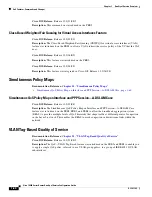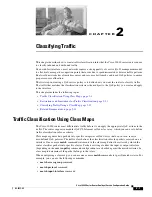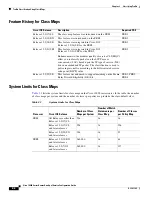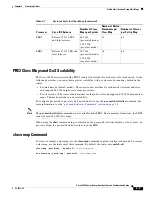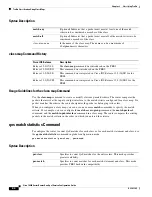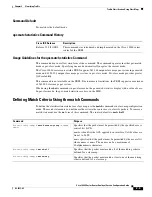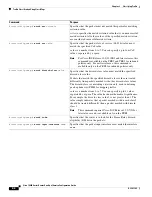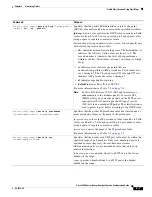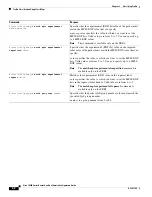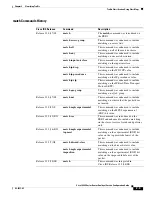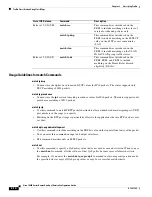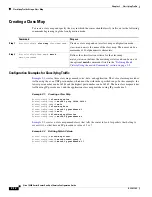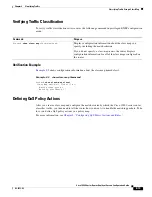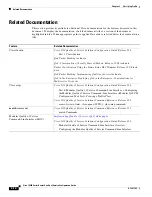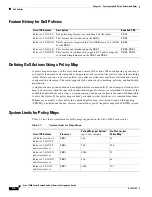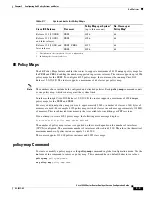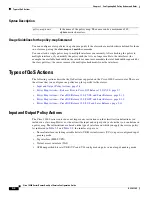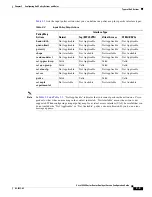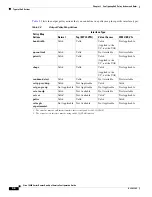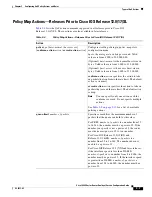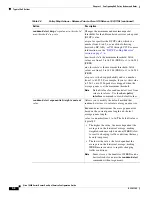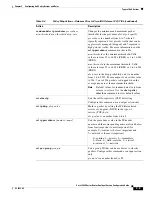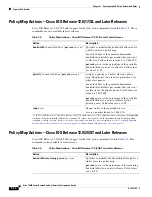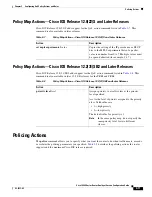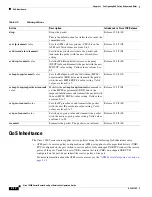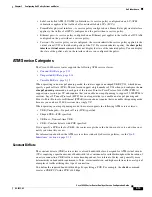
2-12
Cisco 10000 Series Router Quality of Service Configuration Guide
OL-7433-09
Chapter 2 Classifying Traffic
Classifying Traffic Using a Class Map
Creating a Class Map
To create a class map and specify the way in which the router should classify traffic, enter the following
commands beginning in global configuration mode:
Configuration Examples for Classifying Traffic
Example 2-1
creates three class maps named voice, data, and application. The voice class map matches
traffic using the even UDP port number, which must be within the specified range. In this example, the
lowest port number can be 16384 and the highest port number can be 16383. The data class map matches
traffic using IP precedence 1 and the application class map matches using IP precedence 2.
Example 2-1
Creating a Class Map
Router(config)#
class-map voice
Router(config-cmap)#
match ip rtp 16384 16383
Router(config-cmap)#
exit
Router(config)#
class-map data
Router(config-cmap)#
match ip precedence 1
Router(config-cmap)#
exit
Router(config)#
class-map application
Router(config-cmap)#
match ip precedence 2
Example 2-2
creates a class map named class1 that tells the router to look for packets that belong to
access list 1 or that have an IP precedence value of 3 or 7.
Example 2-2
Defining Match Criteria
Router(config)#
class-map class1
Router(config-cmap)#
match access-group 1
Router(config-cmap)#
match ip precedence 3 7
Command
Purpose
Step 1
Router(config)#
class-map
class-map-name
Creates a class map and enters class-map configuration mode.
class-map-name
is the name of the class map. The name
can be a
maximum of 40 alphanumeric characters.
Step 2
Router(config-class-map)#
match
match_statement
Defines the classification criteria for the class map.
match_statement
defines the matching criteria and can be one of
the optional
match
commands listed in the
“Defining Match
Criteria Using the match Commands” section on page 2-5
.

